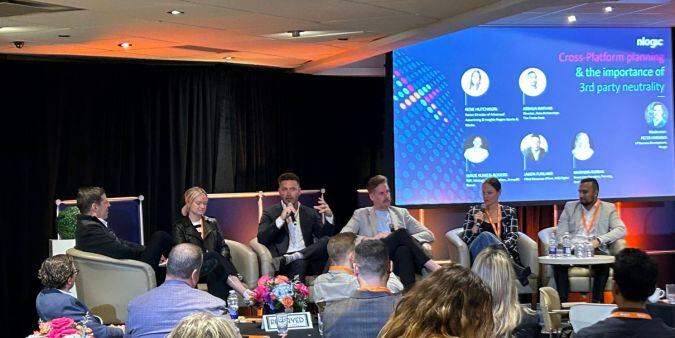The media and advertising industry is undergoing a significant transformation, with data and analytics taking centre stage. This was a key topic at our event earlier this year, where we had the pleasure of hosting several industry leaders from agencies, ad tech, and broadcasters to discuss how to provide actionable insights, drive business outcomes, and adapt to new challenges. Here are some highlights from our panel on Cross-Platform planning, activation, and reporting, comprised of:

The critical role of data and analytics
Jason and Rose kicked off discussions by confirming that their teams are increasingly focused on data and analytics to provide actionable insights and drive business outcomes. They talked about a noticeable transition from traditional media KPIs, such as click-through and completion rates, to actual business outcomes. Their goal is to show how media efforts translate into tangible business results, moving beyond basic metrics to highlight efficacy and impact. According to Jason,
“Insights without action are meaningless…it means taking (insights) and applying them to actual business outcomes”
Rose emphasized that it is no longer enough to have KPI measurement,
“Every programmatic buyer can see performance in their DSP (Demand Side Platform). They know what’s going on with every single one of their campaigns and every single impression. So, we have to provide additional value back to our partners in the form of total TV measurement, insights, and brand lift.”
Building on the growing importance of data, the panel explains how their sales teams are evolving to become more data-savvy, working closely with data scientists and analysts to integrate these insights into their strategies. Jason states,
“We actually use our data scientist and analyst as an extension of our sales team.”
The future of Cross-Platform Planning
In Canada, there are several market solutions for cross-platform planning. Current solutions, such as VAM (Numeris’ Cross-Platform Video Audience dataset) and the Video Planner, are advanced in planning capabilities and focus on understanding reach and frequency. The panel feels there is still a need for better system and data integration to make these solutions more actionable. Maryann says,
“On the planning side, I think we’re nailing it…but in terms of distribution, activation, and optimization, those end-to-end capabilities, is where we’re having trouble.”
Joshua goes on to say how encouraged he feels with the upcoming launch of NLogic’s Video Planner to drive interoperability between planning and activation. Building on comments from earlier, he feels the industry needs to shift focus from merely cost-effective reach to relevant reach. This means prioritizing business outcomes and ensuring that measurement aligns with actual business results rather than just proxies. Joshua says the important question they all want to answer is:
“How do we get the reach that matters at the price point that matters to the customers that matter?”

Independent measurement vs marking your own homework
Wade kicks it off, stating that agencies need a trusted, independent partner for accurate measurement and analytics, particularly in Connected TV (CTV). Initially, CTV's value can be hard to demonstrate, leading to a focus on price. Wade says:
“When it’s tougher to show value at the start for a new environment such as CTV, people look at price.”
The panel highlighted the common practice of agencies adjusting their models to show positive outcomes. This creates a challenge in maintaining neutrality. They understand the need to demonstrate favourable business impact but emphasize the importance of educating the industry on unbiased data analysis and the potential biases in agency and client models.
They also discussed the fragmented nature of the market and the dominance of platforms like YouTube, which control significant audience reach but often operate outside standardized measurement frameworks. The panel expressed a need for education and leveraging tools like NLogic’s Video Planner and VAM to provide brands with a more holistic approach to audience performance, balancing various channels to optimize reach and attention. Maryann states,
“So, it really is on us to challenge and push back a little bit to ensure that marketers are using what’s out there in the industry the best way possible”
What do we need to do in the next year?
In conclusion, this panel emphasized the critical role of actionable insights, independent measurement, and cross-platform integration in driving business outcomes. As we navigate the dynamic and data-driven future of media and advertising, collaboration, education, and innovation will be key.


